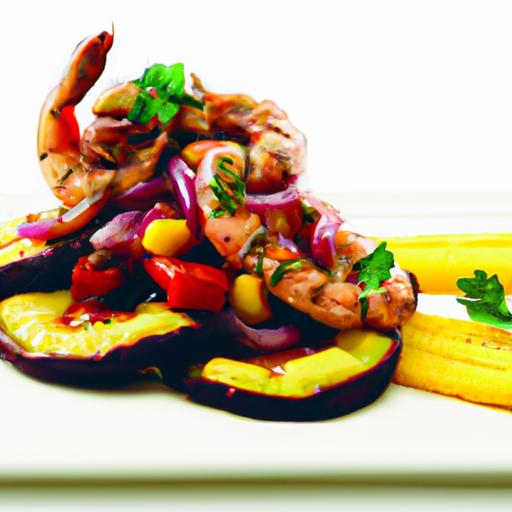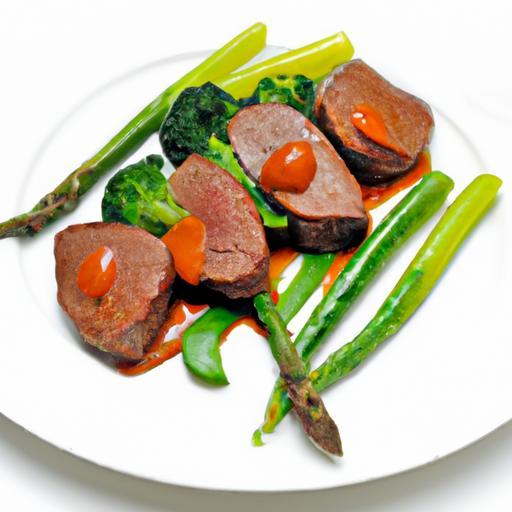Imagine a world where your favorite meals transform from delicious delights into potential health hazards in just a matter of hours. Welcome to the food temperature danger zone – that sneaky range where bacteria multiply like wildfire, turning freshness into risk. In this article, we’ll open the fridge door on the crucial science of food safety, revealing how understanding and mastering this hidden zone can help you keep your meals safe, fresh, and absolutely tasty. Get ready to explore the temperature ticking clock that could protect your health and elevate your culinary confidence!
Inside the Food Temperature Danger Zone: Stay Safe & Fresh! Understanding how harmful bacteria thrive and multiply in risky temperature ranges is essential for every home cook and food enthusiast. This knowledge empowers you to make smarter, safer choices when storing and preparing meals, ensuring your dishes are not only delicious but also confidently safe to serve. Let’s explore how to expertly manage temperatures to protect your food from unwanted microbial activity, keeping freshness and flavor perfectly intact.
Prep and Cook Time
Preparation: 10 minutes
Cooking/Handling: Variable depending on method (cooling, reheating, cooking)
Yield
Applicable for all meal sizes-serving safety tips for 2 to 8+ servings
Difficulty Level
Easy to Medium-Perfect for beginners to food safety pros
Ingredients for Safe Food Handling
- Fresh produce: thoroughly washed and dried
- Raw proteins: refrigerated promptly
- Thermometer: digital instant-read for accurate temps
- Ice packs or coolers: for rapid chilling
- Clean containers: airtight, BPA-free plastic or glass
- Sanitizing wipes or spray: for food prep surfaces
- Cooking oils, herbs, and spices: for flavor without risk
Instructions: Mastering Safe Temperature Handling
- Recognize the danger zone: Keep perishable foods out of 40°F to 140°F (4°C to 60°C), where bacteria multiply most rapidly.
- Chill ingredients promptly: Refrigerate leftovers within 2 hours of cooking (or within 1 hour if above 90°F outdoors). Use ice baths to cool soups and stews quickly.
- Use a reliable food thermometer: Check cooking temps to reach safe minimums-e.g., 165°F (74°C) for poultry, 145°F (63°C) for whole cuts.
- Divide large portions: Store in shallow containers that cool rapidly, preventing the inner core from lingering in the danger zone.
- Reheat properly: Always heat leftovers to an internal temperature of at least 165°F (74°C) before serving.
- Avoid cross-contamination: Use separate cutting boards and utensils for raw and cooked foods, keeping surfaces sanitized.
- Keep cold foods cold: Maintain refrigeration below 40°F (4°C) until serving, using coolers during transport.
- Plan meals mindfully: Use “first in, first out” principles to avoid expired leftovers lingering in the danger zone.
Tips for Success: Smart Cooking and Cooling Strategies
- Pre-chill serving plates and bowls in the fridge to maintain the freshness of cold dishes at the table.
- Use insulated containers to keep hot foods above 140°F during transport or buffet service.
- Cook in small batches to allow faster cooling, reducing bacterial growth risk.
- Marinate foods in the refrigerator, never at room temperature, preventing bacterial proliferation.
- Label and date all leftovers to monitor freshness and safe usage windows.
Serving Suggestions
Present your meals with confidence knowing each bite is fresh and safe. For cold salads, toss fresh herbs like cilantro or basil just before serving and garnish with lemon wedges to brighten flavors. Hot dishes benefit from a sprinkle of cracked black pepper and a drizzle of high-quality olive oil plated warm but not steaming excessively. Pair with crisp side vegetables chilled until just before eating for a perfect temperature balance. Always offer condiments and dressings in chilled bowls to complement safely stored foods.
| Nutrient | Impact on Food Safety | Temperature Range | Recommended Handling |
|---|---|---|---|
| Protein | Bacterial growth rapid without cooling | 40°F-140°F (4°C-60°C) | Cook thoroughly; refrigerate promptly |
| Carbohydrates | Provide nutrients bacteria need | Danger zone | Store in sealed containers under 40°F |
| Fat | Can spoil if left warm too long | Above 40°F | Keep refrigerated or hot over 140°F |
| Water Content | High moisture encourages bacteria | Danger zone | Control temperature tightly during prep & storage |
Discover even more kitchen confidence with our Complete Guide to Food Safety and prevent foodborne illnesses today. For authoritative advice on safe temperature ranges, visit the U.S. Food Safety and Inspection Service.

Q&A
Q&A: Inside the Food Temperature Danger Zone: Stay Safe & Fresh!
Q1: What exactly is the Food Temperature Danger Zone?
A1: The Food Temperature Danger Zone is the range between 40°F (4°C) and 140°F (60°C) where bacteria love to multiply-fast. When food lingers here, it becomes a playground for harmful microbes that can cause foodborne illnesses.
Q2: Why is it so important to avoid the Danger Zone?
A2: Think of the Danger Zone as a microbial party you never want to join. Bacteria double in number every 20 minutes in this range, turning fresh, safe food into a potential health hazard in no time!
Q3: How can I keep my food out of the Danger Zone?
A3: Keep cold foods chilled at 40°F or below and hot foods heated at 140°F or above. Use refrigerators, freezers, and warming trays to maintain these temperatures. Also, don’t leave perishable foods sitting out at room temperature for longer than two hours – one hour if it’s over 90°F outside!
Q4: What are some common foods vulnerable to the Danger Zone?
A4: Meats, poultry, dairy products, cooked rice and pasta, cut fruits and vegetables, and seafood all need special care because they provide a cozy environment for bacteria to thrive.
Q5: How can I tell if food has been in the Danger Zone too long?
A5: Sometimes it’s hard to tell by sight or smell alone, so when in doubt, toss it out. Use a food thermometer to check temperatures, and always trust food safety guidelines rather than your nose.
Q6: What’s the best way to safely cool hot food?
A6: Speed is key! Divide large batches into smaller, shallow containers to cool faster in the fridge. Avoid leaving food on the counter to cool, as this drags it through the Danger Zone too long.
Q7: Are leftovers safe to eat, and how should I store them?
A7: Leftovers are safe if cooled quickly and stored properly below 40°F. Eat them within 3-4 days or freeze for longer storage. Reheat thoroughly-at least 165°F (74°C)-before digging in!
Q8: Can proper food handling prevent food poisoning?
A8: Absolutely! Washing hands, using clean utensils, and avoiding cross-contamination are frontline defenses. When combined with temperature control, you keep bacteria at bay and meals safe.
Q9: What about freezing-does it kill bacteria?
A9: Freezing pauses bacterial growth but doesn’t kill all bacteria or toxins. Thaw safely in the fridge, cold water, or microwave-not at room temperature-to avoid re-entering the Danger Zone.
Q10: What’s the biggest takeaway about the Danger Zone?
A10: Time and temperature are your enemies and allies in food safety. Stay mindful of how long food spends between 40°F and 140°F, and you’ll keep your meals fresh, tasty, and safe for everyone at the table!
Insights and Conclusions
As we close the door on the culinary world’s temperature tightrope, remember: the danger zone isn’t just a phrase-it’s a hotspot where freshness goes to falter and bacteria begin their silent takeover. By mastering the art of keeping your food out of this risky range, you’re not only preserving flavor and texture but safeguarding your health and that of your loved ones. So next time you stock the fridge, meal prep, or serve a feast, let temperature be your trusted ally. Stay informed, stay vigilant, and keep your meals deliciously safe-because when it comes to food, temperature truly is the ultimate secret ingredient.


